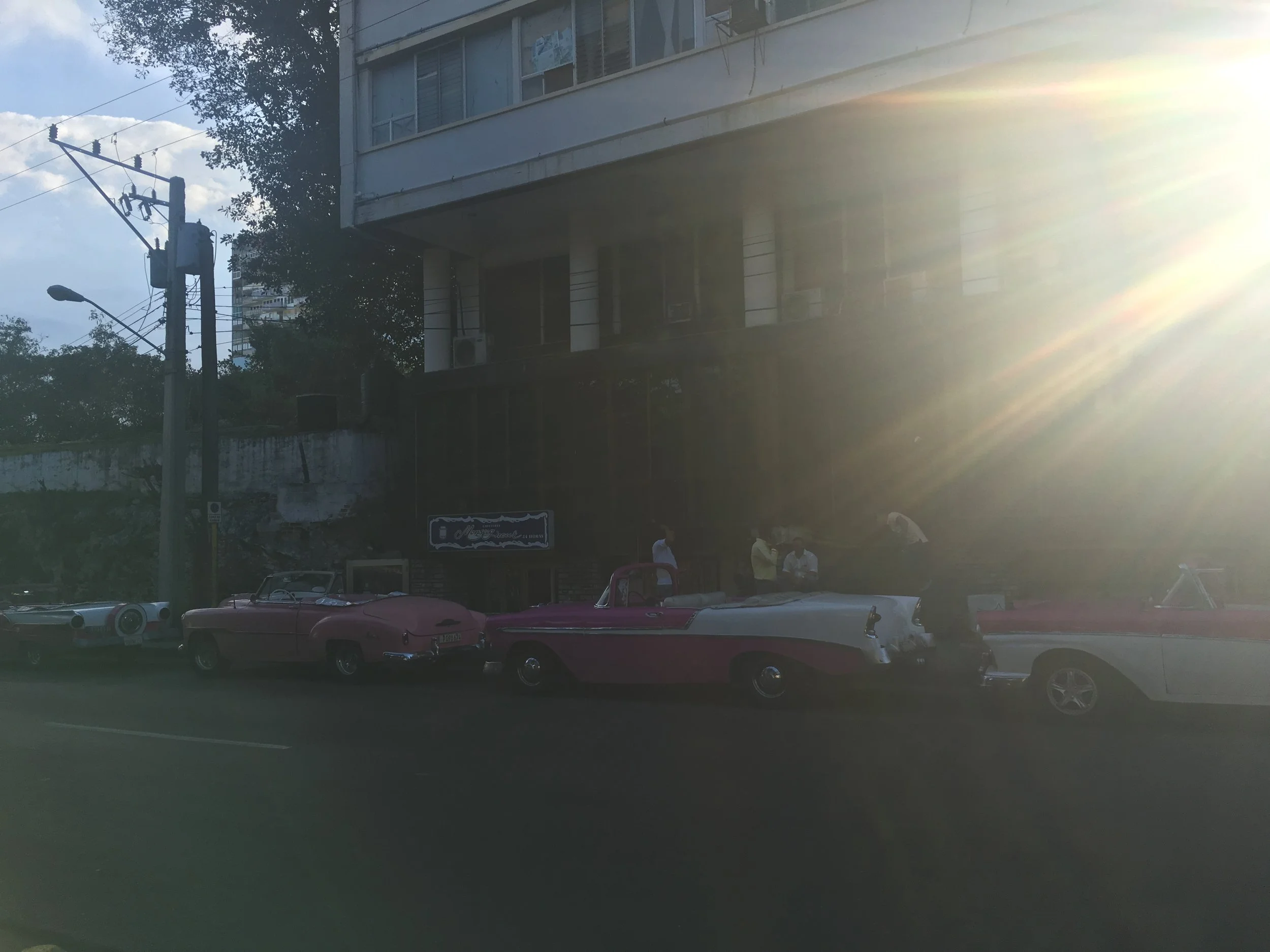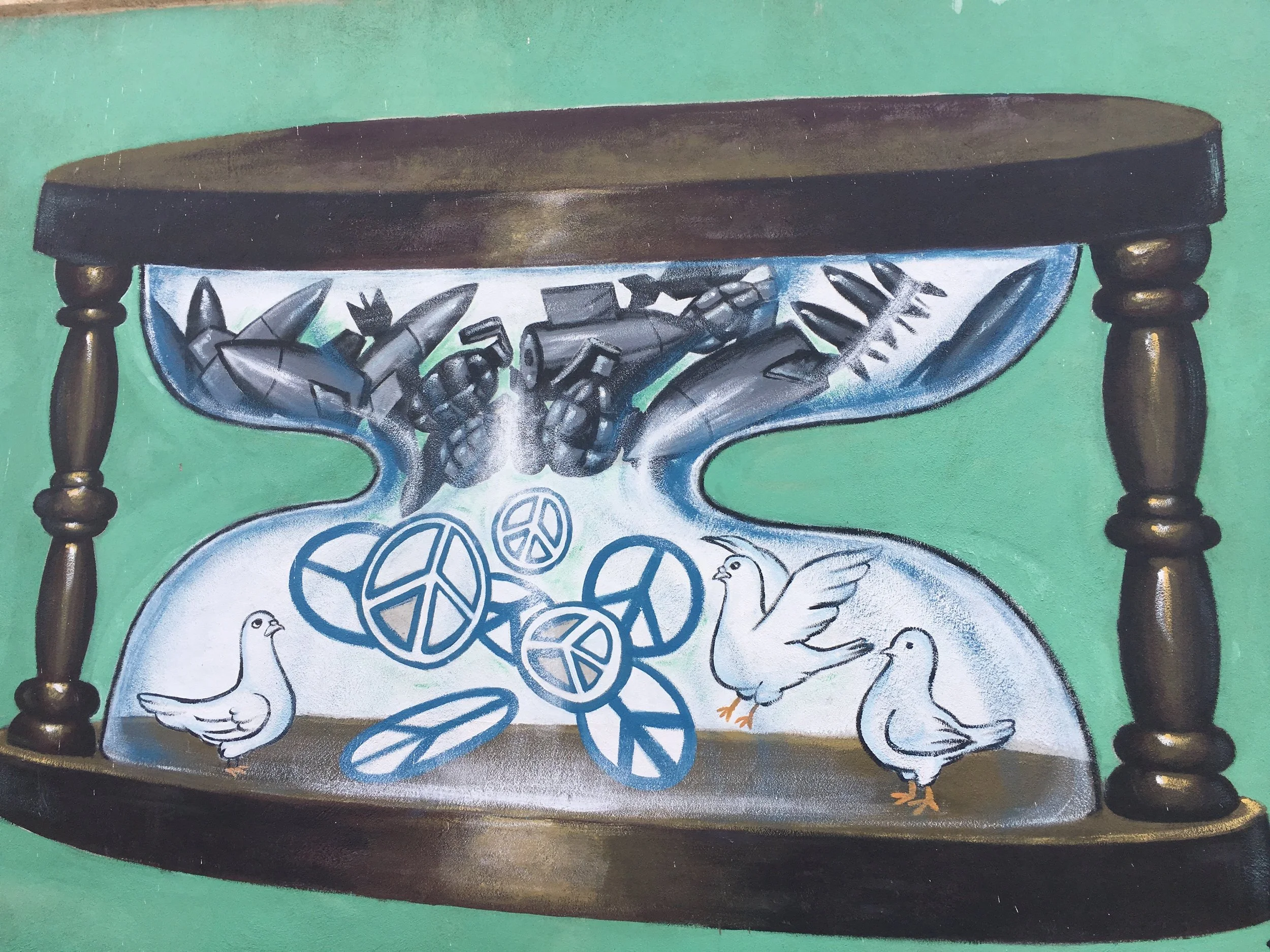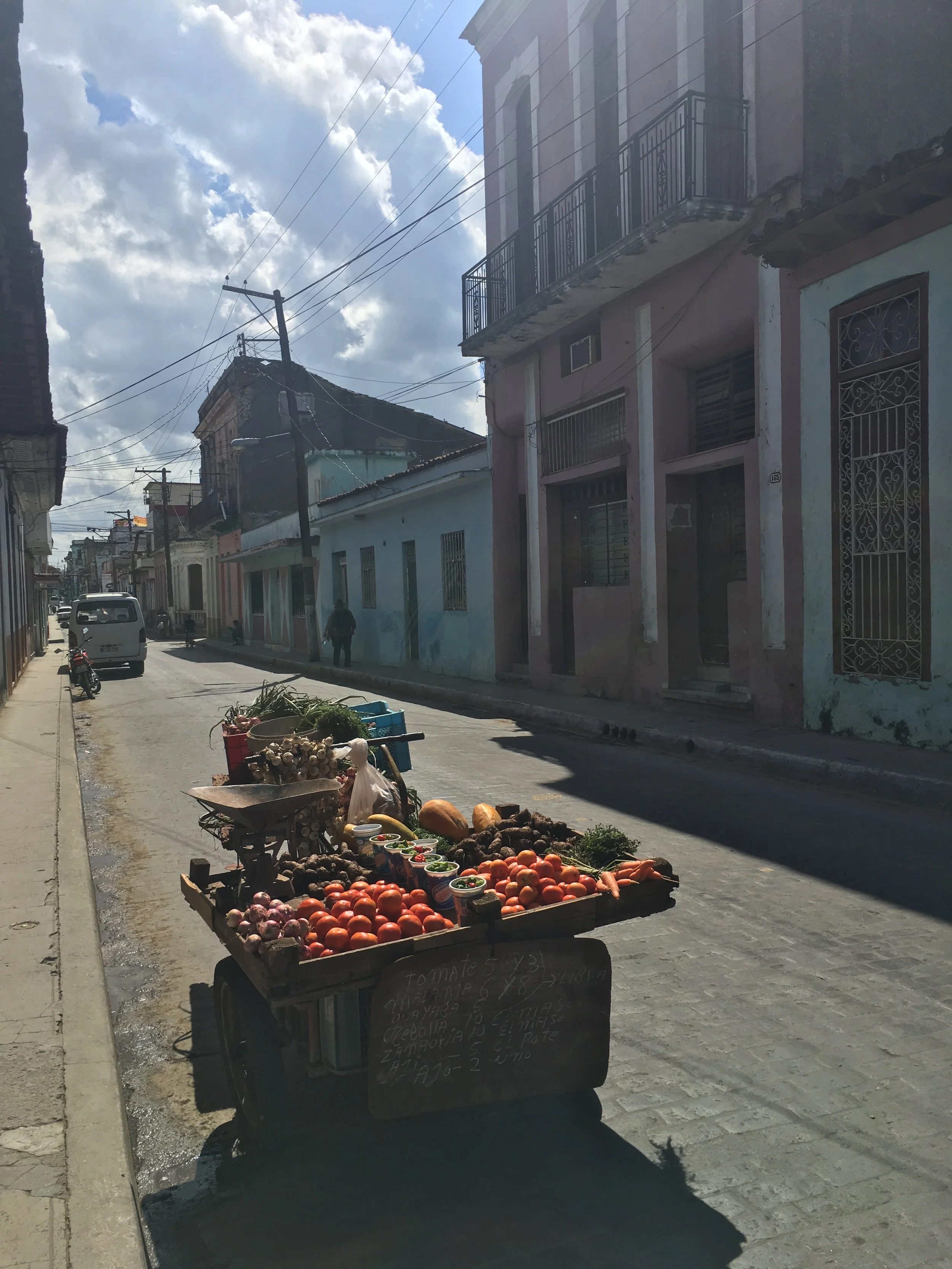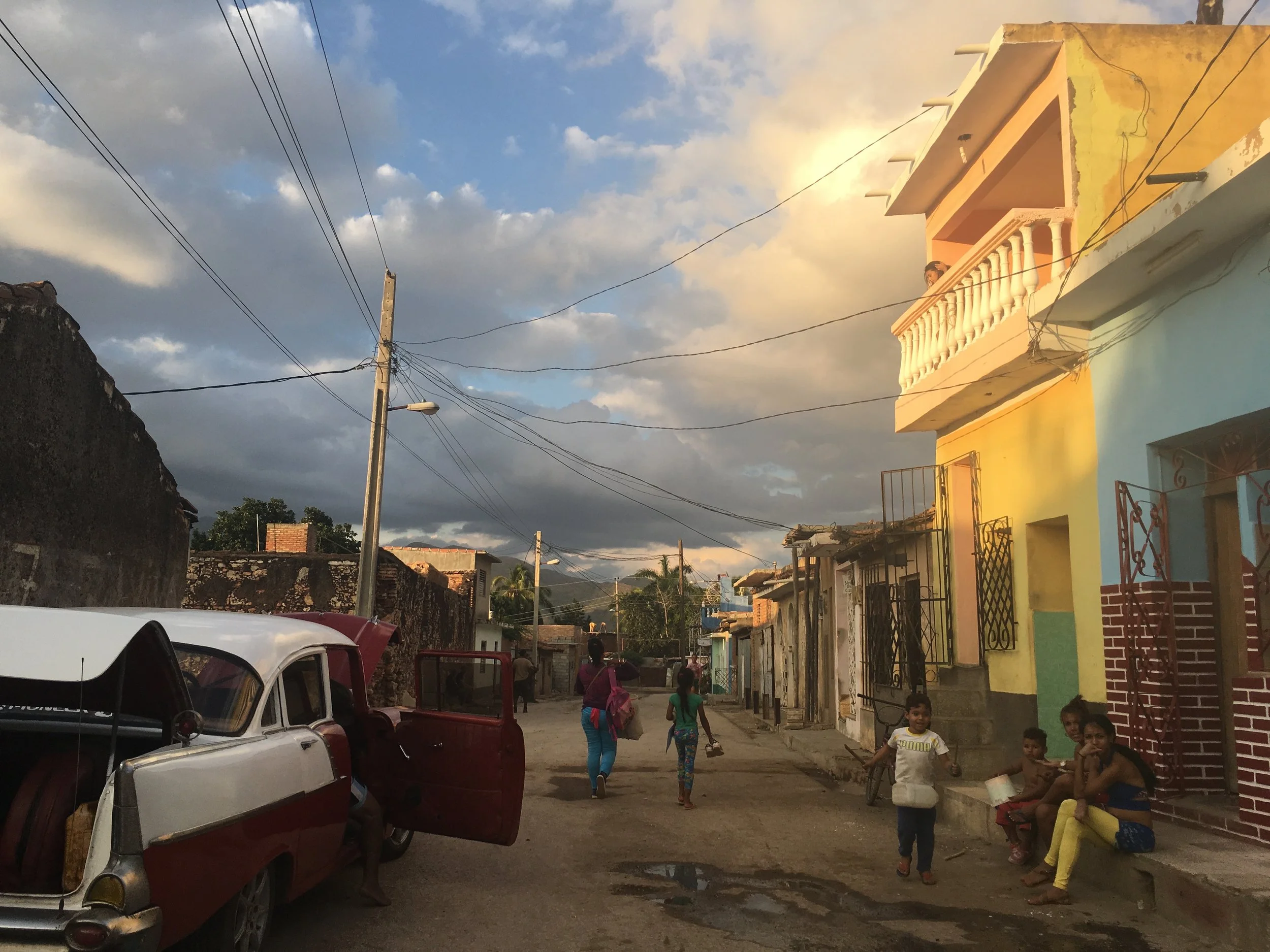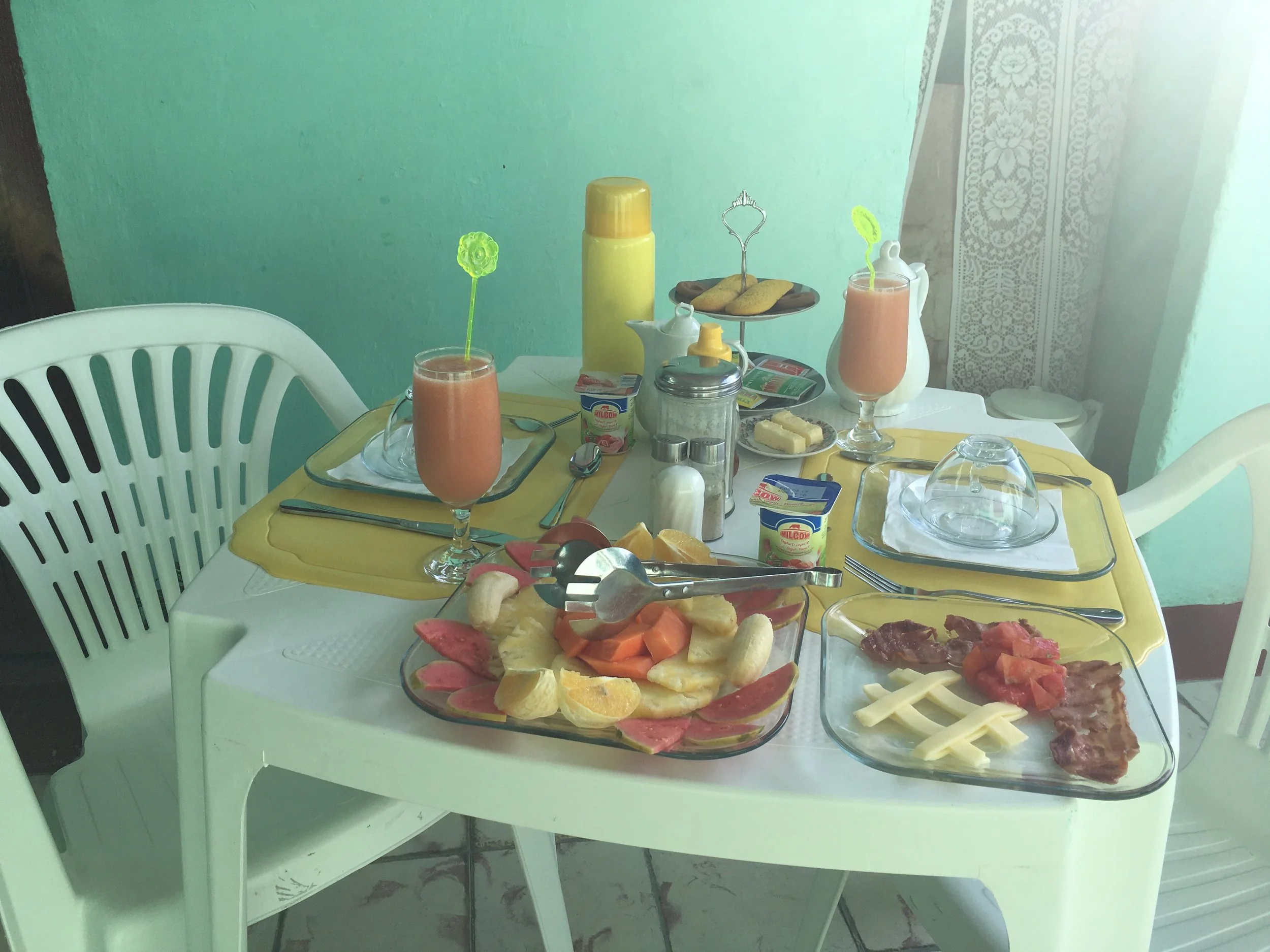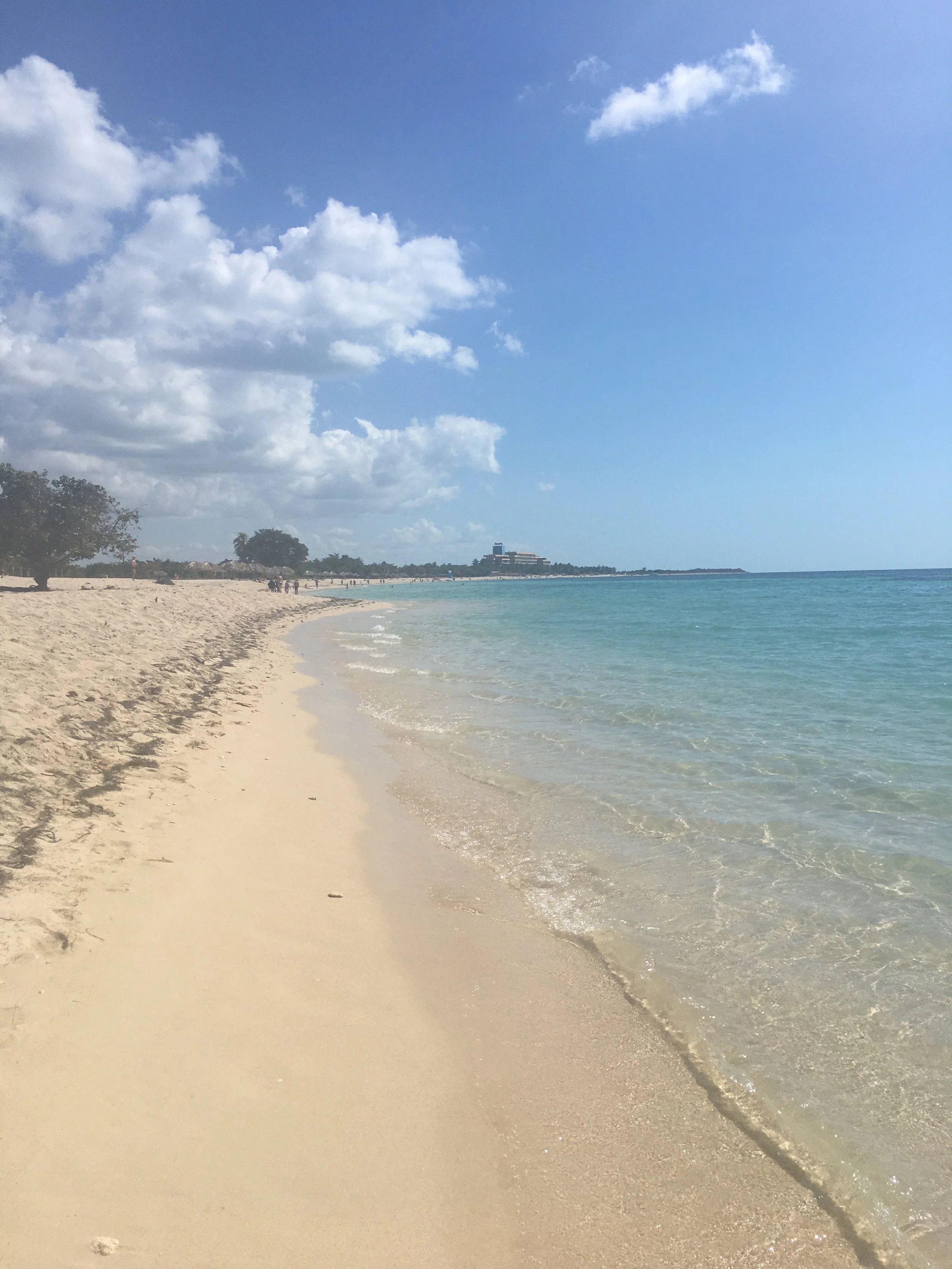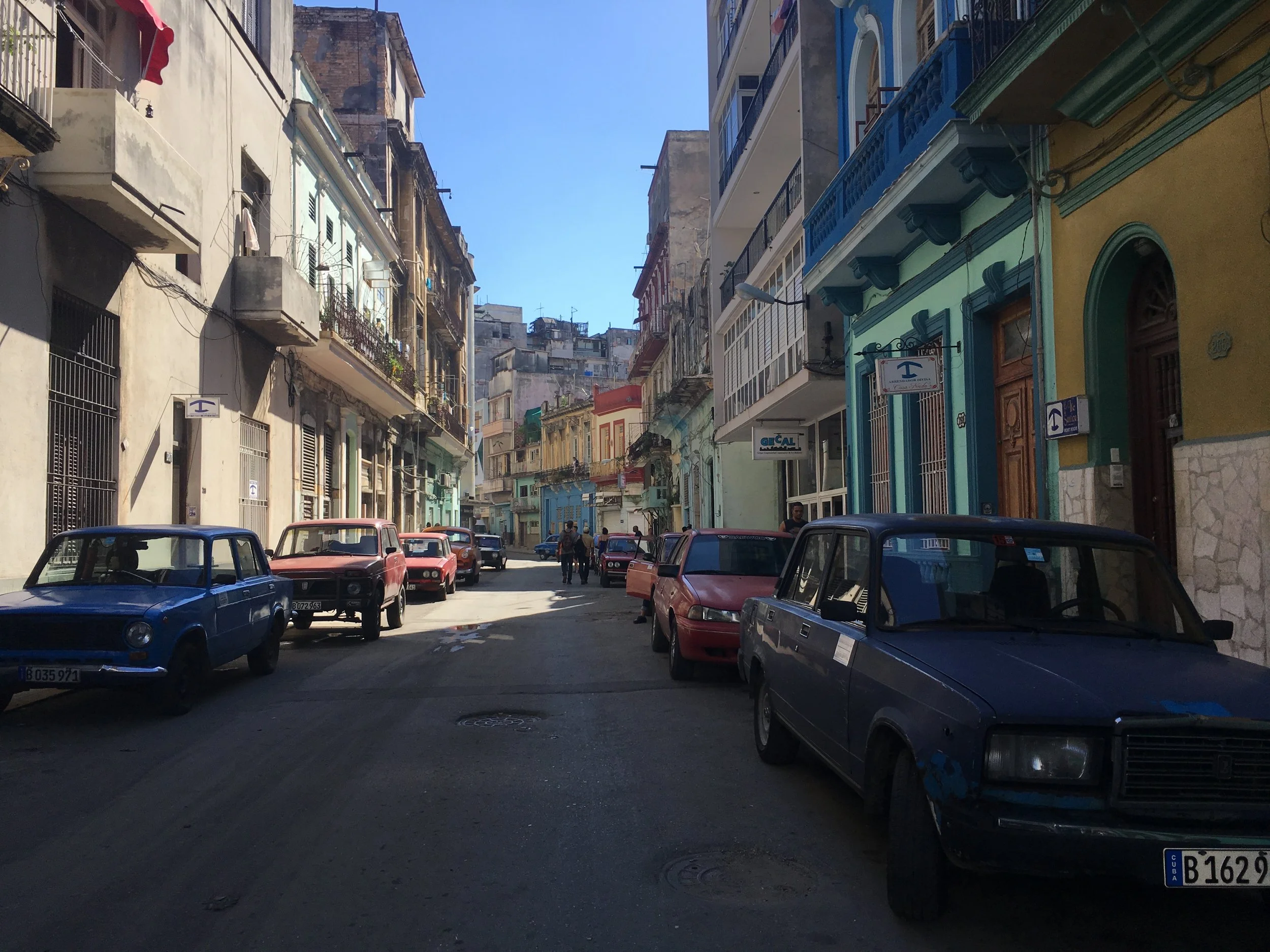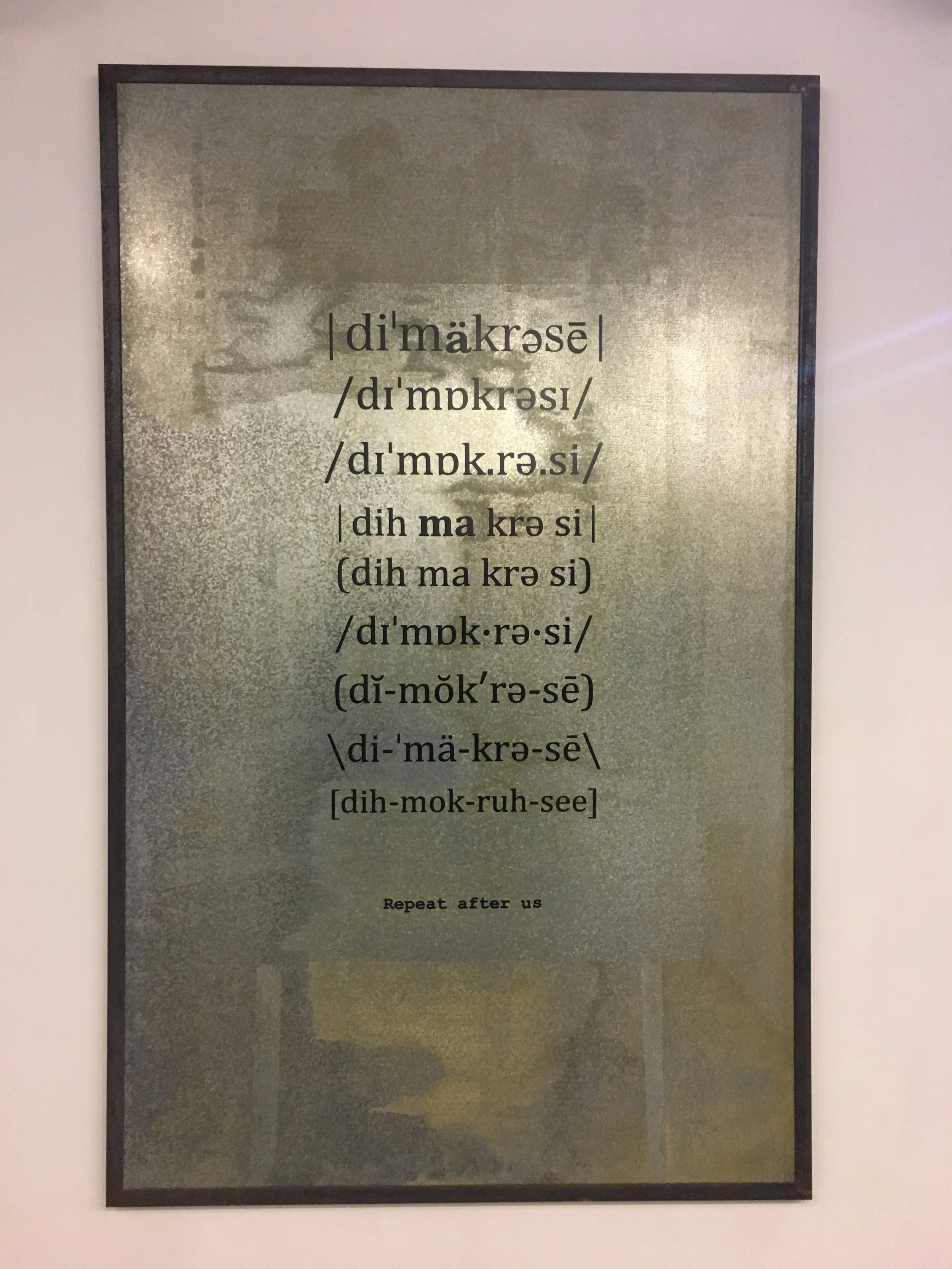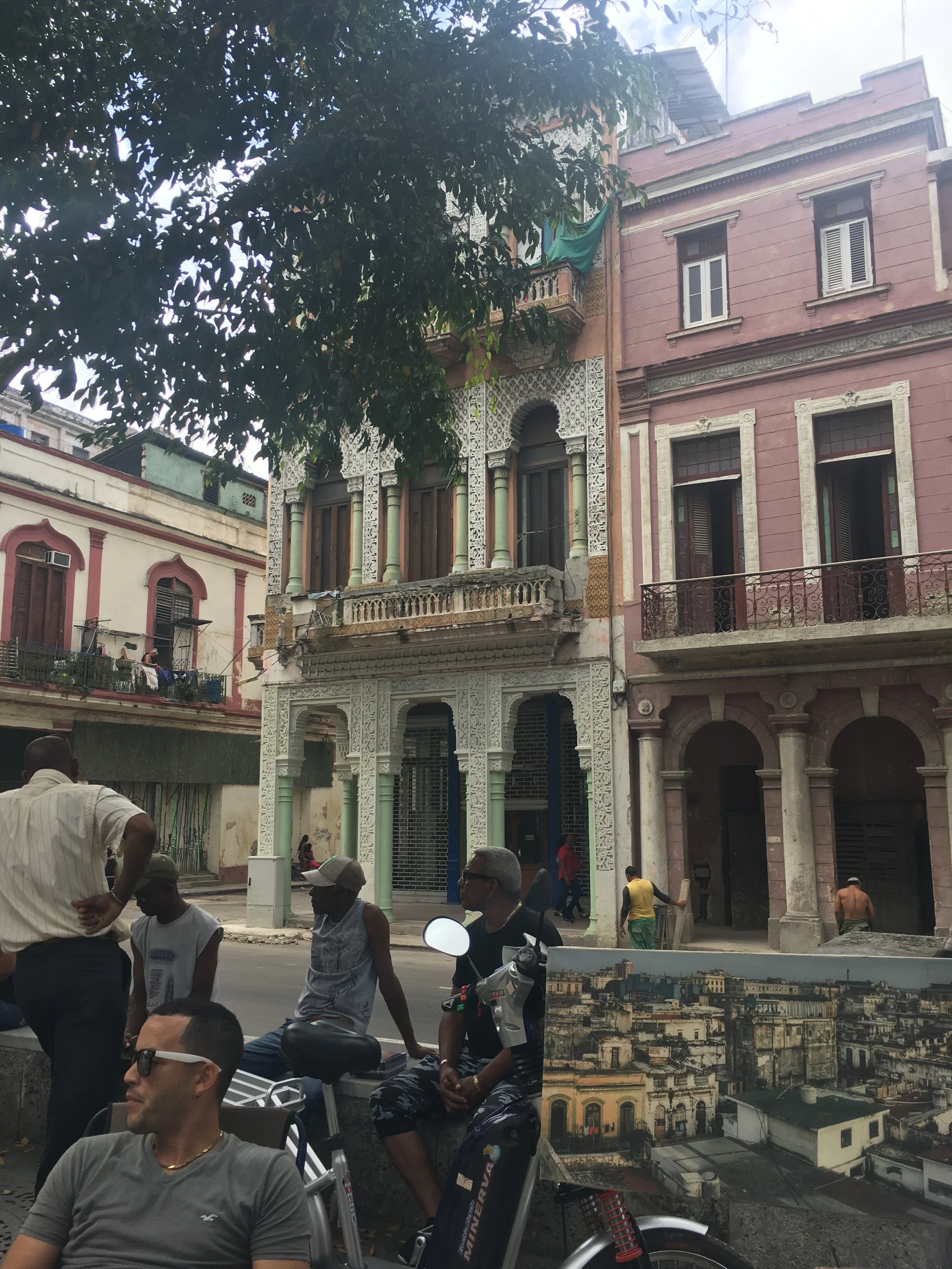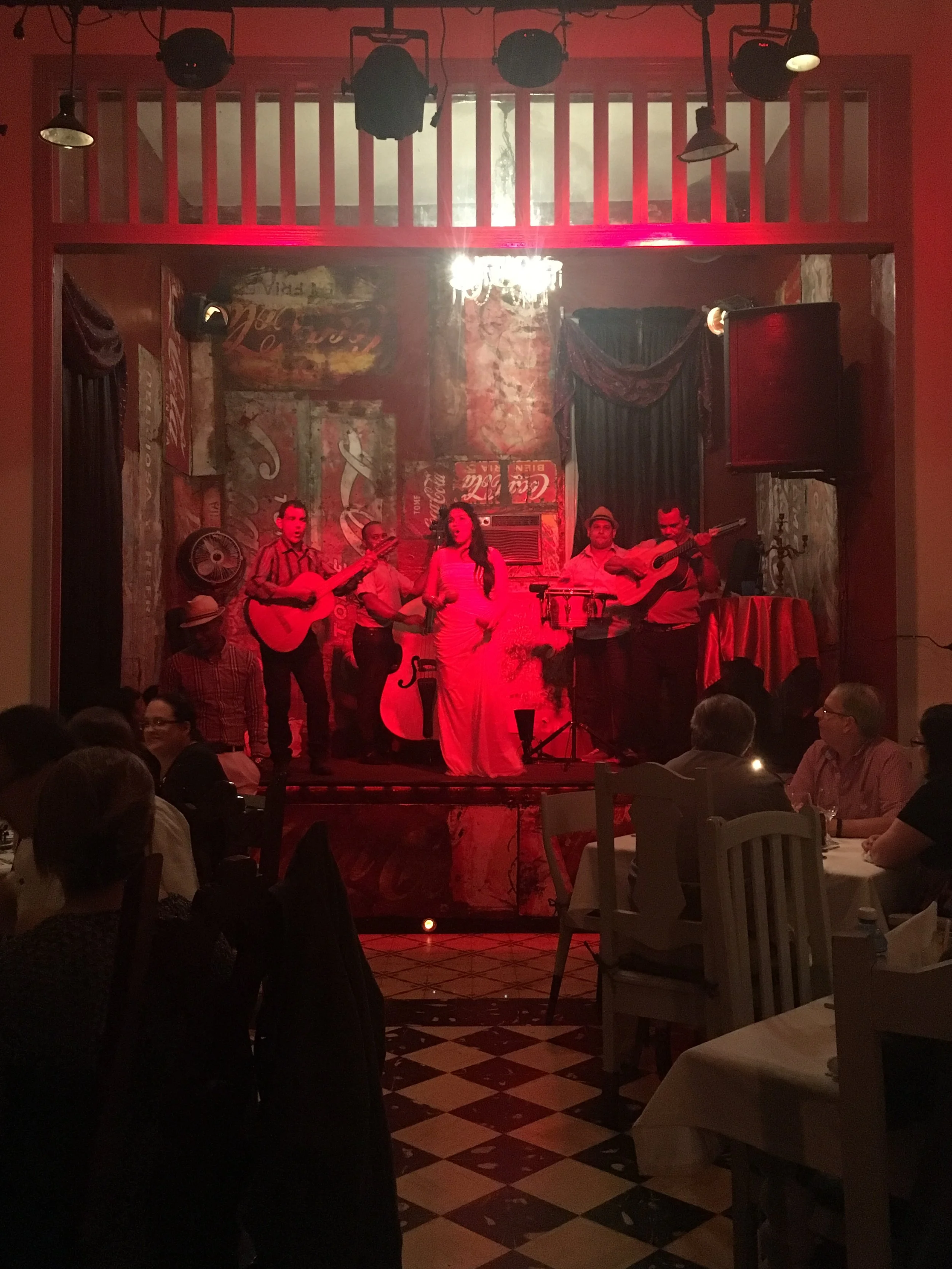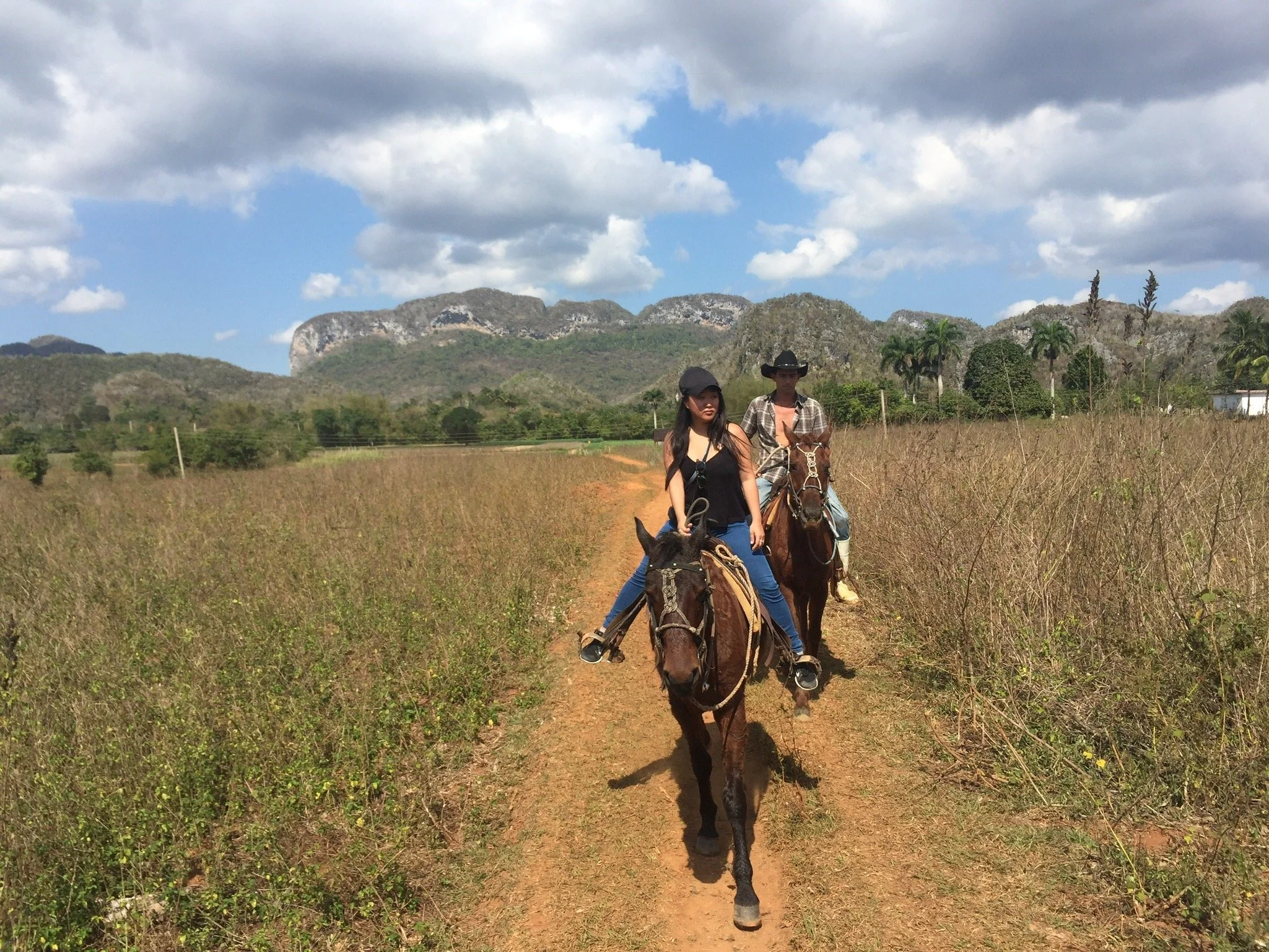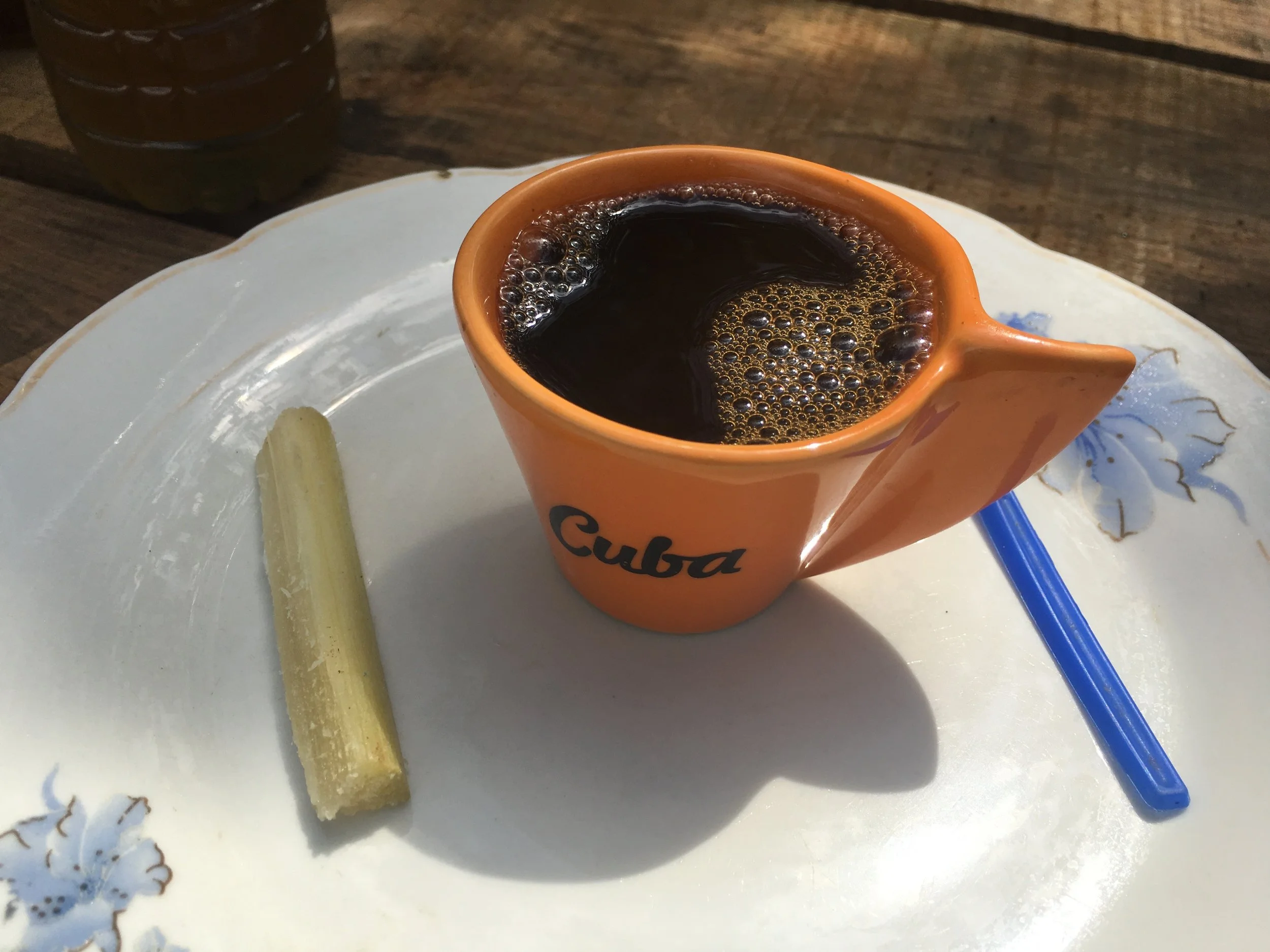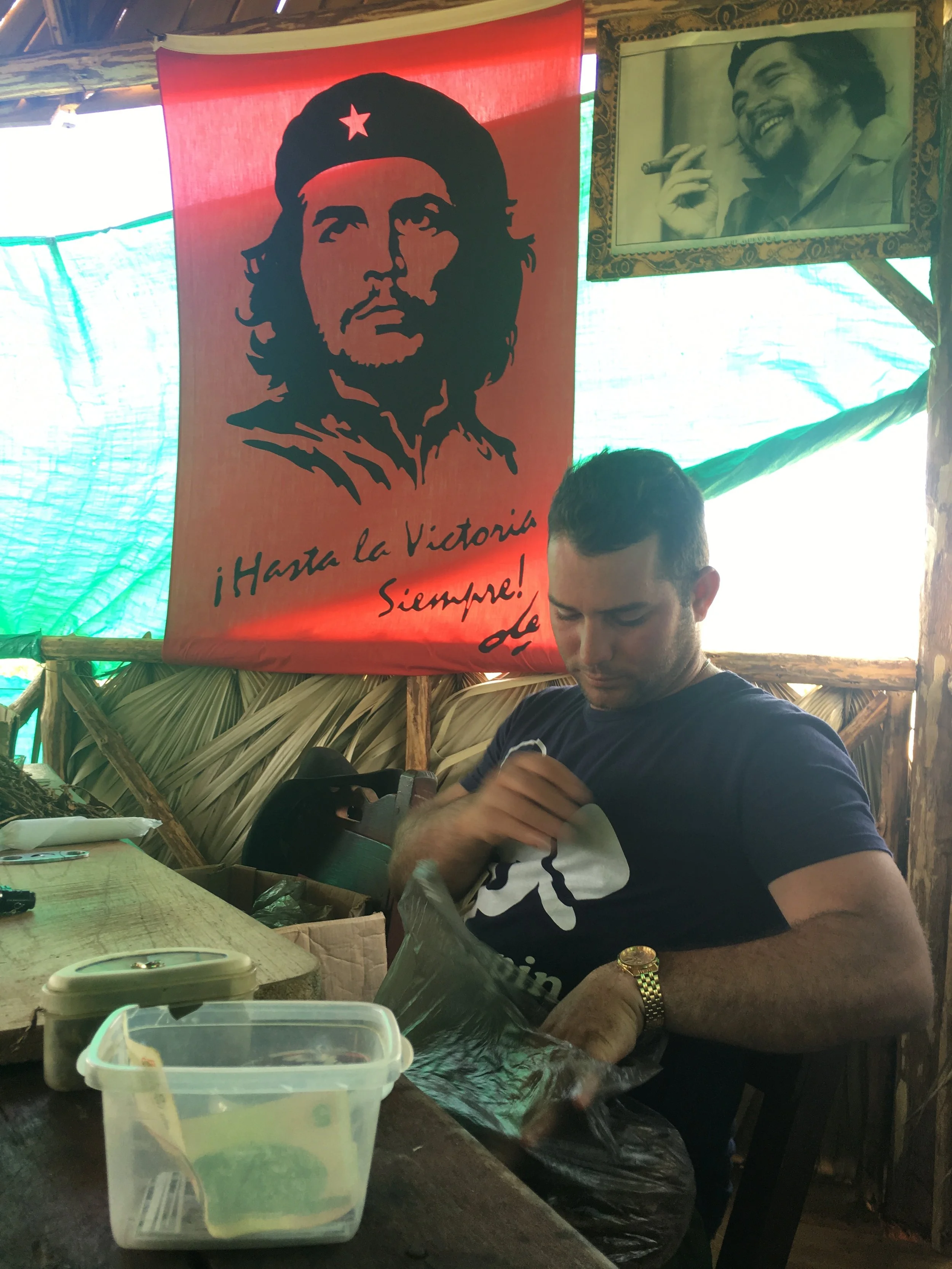Cuba: Get ‘er Done
Why Cuba?
What a place on this planet. It’s the amalgamation of things in architecture, in mood, in creation. There is food, there is jazz, there are mojitos. There are Cuban cigars, there are 1950s convertibles. There is strong coffee, there is political insight. There are beaches and cities, dilapidated buildings, and energy.
Cuba is also not so difficult to get to. Just like traveling to Miami.
Here are a handful of highlight locations and spots within this tundra.
Santa Clara
Santa Clara is a good starting out point in Cuba.
It’s noted for its art scene street-style and promotion of the place from the ground up. Murals adorn walls, bridges, buildings, and streets.
Santa Clara is central Cuba and holds a meaningful gravity via the Cuban Revolution.
Truth be told, I had to go here because of the recommendations to experience the Che Guevara Mausoleum Museum in this area which is a pensive place to consider the impact that the political figure provided to the geopolitics of Cuba today.
Trinidad
Only 20 minutes from Santa Clara, Trinidad has a more boisterous vivaciousness with all of its colorful buildings and a bump in the air.
Trinidad of Cuba is one of the most preserved parts of the colonial era, itself recognized as a UNESCO World Heritage Site. There’s an intrigue in the squares of Spanish style and capped off with the bright blue beaches that are touted as much less touristy than other beaches of the island. They’re largely populated by locals rather than foreigners and which gives it a particular vibe.
If you make it to Trinidad be sure to check out the rooftop Munoz Tapaz for delightful drinks, good music, and beautiful views.
Where to Stay? HOSTAL Nochea y Familia
This homestay has a seafoam green interior with a rooftop overlooking the area. It has personality and it feels like a long-lost relative’s long-lost beach haven. The rooms are comfortable and the people are so welcoming, the homemade breakfast is to be remembered.
Many of the B&Bs in Santa Clara and Trinidad are informal homestays that don’t require reservation. They’re booked on-site and casually open their doors to floral-designed comforters and 80s tchotchkes on shelves. Many serve Cuban breakfasts of tropical fruit, bread, and strong coffee. These spots give flavor to the staying in Cuba.
Disco Ayala
For dancing, hike the underground route to the club Disco Ayala which is in an actual underground cave. It’s recommended for a blast of a time in an unusual setting with everyone getting down, smoking cigars, and enjoying. The cavernous acoustics give the space a resonant atmosphere. Music ranges from salsa to reggaeton to traditional Cuban music, to 2000s hip-hop. The acoustics are huge, the crowd diverse, it’s a one-of-a-kind space and experience.
Playa Ancon
Playa Ancon is the most beautiful beach in Trinidad. Its waters are ombre crystal clear to brilliant blue and the sandy beach is soft and stretches on and on. There are water activities such as snorkeling and diving, but it’s mostly regaled with swimmers and sunbathers. Beach hawkers sell streetside foods such as square pizza slices, fried snacks, and souvenirs. There are restaurants additionally along the way that tout fresh seafood.
Havana
Havana is the most essential heartbeat of the country and where the most activities, diverse food, and sites are concentrated. Old Havana is a UNESCO World Heritage Site. The sites and scenes of this waterfront capital are extremely pleasurable, the pulse of Havana is illuminated by the old cars rolling slowly through the streets, the shadows of art deco-style, and a soundtrack of bumping bass in invisible drums.
There is a strange beauty, a kind of sad girl beauty about the streets of Havana. They have so much that’s both seen and unseen, the explanatory nature of its depth is myriad. At the same time as being full of life, they have this billowy emptiness feel to the old buildings while the sun reflects off the waters and lights up the thoroughfares surrounding them. It’s all such a brilliant fusion of aesthetic intake.
There are additionally various day trips to take from Havana and it’s a great way to end a visit to this country. I suggest capping your trip off in Cuba with Havana.
Where to Stay? Hotel Florida or Gardens Havana
Homestay in Cuba has a murder mystery vibe, long thick drapery, and overstuffed chairs, not that things have dust on them, but have the feel of the old grandma squeaking back and forth in a rocker. At these, the grandma wears sunglasses at night and sips a Cuba Libre at the same time.
Hotel Florida
Hotel Florida has comfortable rooms with a posh interior, a full restaurant, and a piano bar. Located near the Havana Port, a mere few minutes from the sunlit Malecon stretch, it’s a solid resting spot between jumping in and out of old convertibles.
Gardens Havana
Conde Nast recently did a piece featuring the newly renovated mere four-bedroom boutique hotel that is Gardens Havana. Carefully curated by local artisans in furniture and style, the stay allegedly comes with a secret guide to rare finds of the city. The personalized stay seems intimate and inclusive to help with touring and activities, food, and transportation.
The streets of life, old, and new
Activities
Old School Cars
If you’ve had Cuba on your go-to, it’s the old-school car situation along all the streets that brings a sort of insane intrigue to the place. One feels transported through to the 50s in the reflection of these cars that embody the country’s spatial makeup. They provide a fascinating pace and material symbolism to the otherwise Caribbean island.
The history of old 50s cars in Cuba dates back to the Revolution in 1959 when the trade embargo via the states disallowed the import of new vehicles. Resulting, Cubans made modern the old cars, they became symbols of Cuban resilience. And local mechanics also out of necessity needed to propel ingenuity to keep the cars running longer. They’ve stayed a solid presence in the country and today herald meaning in image and identity.
Tours within an oldie car are what you’ll crave doing and experience the city from them. It’s an inspiring way to get a bit of history about everything built here. These tours can be easily organized via your stay, or at the Plaza Vieja where tour guides park, ready to whisk you around Havana and beyond.
Image by Linhao Zhang
Fabrica de Arte de Cubano
Fabrica de Arte de Cubano is the Brooklyn warehouse party from 2012 that you needed to go to. It has a modern industrial feel and it’s filled to the brim with provocative thought in the form of paintings, photographs, installations, and sculpture. It’s a multi-level multi-building complex that spans a whole area, some parts and galleries indoors, some areas outdoors or partially outdoors. Since it’s Cuba, the bulk of art is rich with political intonation and there isn’t one thing that won’t make you think. There’s also an abundance of music, and performances, there are a few bars scattered throughout, and every wall has some sort of piece; it’s a happening place.
Prepare to stand online if you venture on the weekends particularly.
Cafe Miglis and La Zorra y el Cuervo for Jazz
A jazz experience to be had, Cuban jazz will be the soundtrack to your adventure. The live music at both spots is riveting and sensational, it’s a must-experience. Cafe Miglis is a restaurant combination scarlet-lit club with a small stage and gigantic voices. Live instruments and drinks pepper the scene and you’ll be cheering loudly with local regulars and tourists alike. While La Zorra y el Cuervo is a slightly bigger underground spot. It has a line, and is more packed with tourists, but is rewarding in boisterous ensemble sets that are hard to follow and easy to enjoy.
Karachi Club for Dancing
If you’re interested in going dancing there is nowhere I can recommend with more animation than Karachi Club. It’s a little bit obscure to get to and is described verbatim by Lonely Planet as “Ferociously Caliente.” This is a truly non-tourist gem of a spot.
Streets of Havana and art sellers
Cafe Miglis
Vinãles Valley, Horseback Riding, Cigar Farm, Rum Tasting, and Old Cars (again)
Beyond Havana’s Malecon and urban clip, there is an agriculture scene worth scoping.
It’s a bit of a drive, but if you want exposure to a real Cuban cigar farm, and a sample of homespun rum, the valley is a few hours from Havana by car. There, you can also ride horses, get cigars from the leaves themselves, and sample coffee as well. The views are thrilling and it’s gratifying to see the products Cuba is known for from the ground up, to get a feel for the rural landscape connected to Havana.
Horseback riding through the valley
Strong Cuban coffee tastings
*Safety tip
Most places don’t accept credit cards. Most places do take dollar and Euro, and it’s best to bring a good amount of cash with you if traveling from the States or Europe. However, if you want to exchange a sum for Cuban pesos, this can be planned at the government offices, CADECA, which is a safe way to exchange and pay for things. The CADECA is easy to get to though sometimes has a line.
Spanish is important and not crucial to going to Cuba. However, it will be beneficial to learn more and interact with the locals of the country.
Finally, Cuba is simultaneously less necessary and harder to organize ahead of time. On, the other hand, once there, it’s fluid and obvious how things get organized. Even finding casa stays, or day-trip excursions is straightforward, it’s the kind of on-the-ground arrival that is seamless to sort once there.
Bottom line
If Cuba has been a country on your roster, you will be nowhere near disappointed.
It’s probably best to know Spanish but it’s not critical. It’s absolutely a place for explorers who are more laissez-faire when it comes to organizing travel and love a spontaneous rumble of activities you happen upon. Cuba is a wonderful island that has a range in terms of natural beauty, art, and museums, as well as flavor in its variety of architecture and food. For me, it’s the prominent poetry of old cars on old streets with fresh music and an undeniable energy about the place that heralds it as an exceptional off-the-beaten must-go. Overall, the combination of things will astound and delight, there’s a lot of vitality in this place. And it’s fascinating seeing the grass on the other side.

